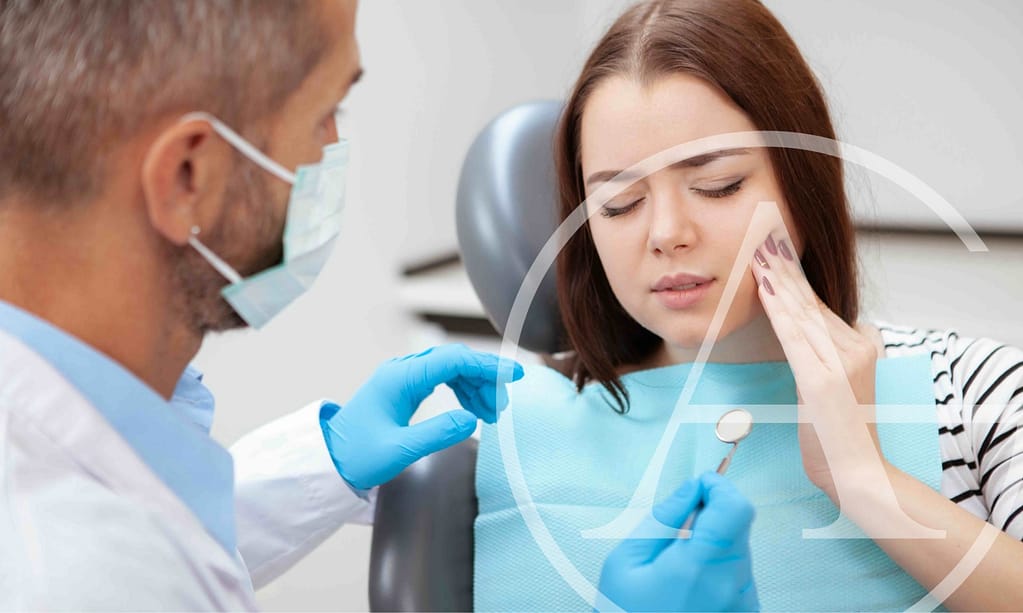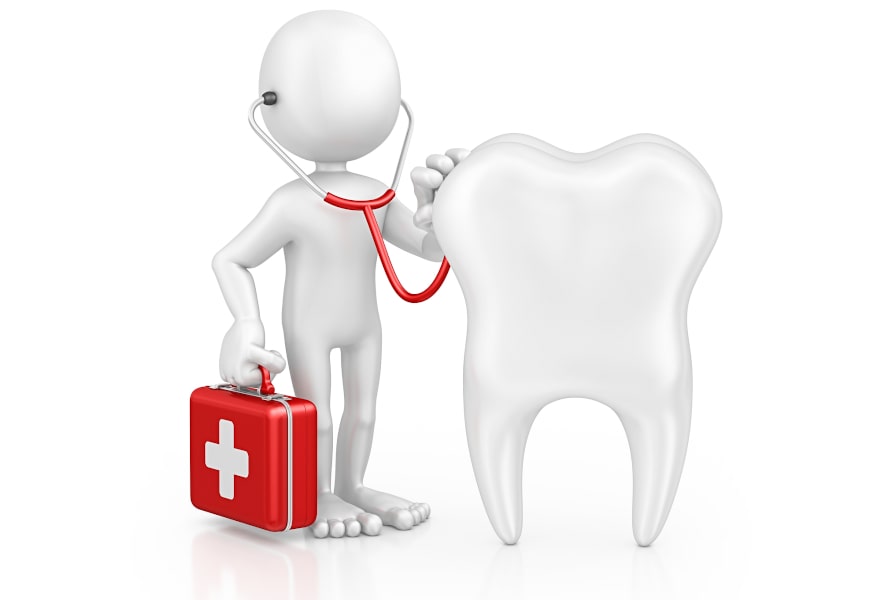Emergency Dental Care: Your Essential Guide to Handling Dental Emergencies
Dental emergencies can occur at any time, often catching us off guard when we least expect them. Whether it’s a knocked-out tooth, a severe toothache, or an unexpected injury, knowing how to handle these situations can make all the difference in preventing further damage and ensuring the best possible outcome for your dental health.
In this comprehensive guide, we’ll cover everything you need to know about emergency dental care, including common dental emergencies, first-aid tips, and when it’s essential to visit an emergency dentist.

What is Emergency Dental Care?
Emergency dental care refers to immediate treatment provided to address sudden and severe dental issues that could potentially lead to long-term damage or severe pain if not treated promptly. Dental emergencies can involve various conditions, such as broken or knocked-out teeth, infections, or severe gum bleeding. They require urgent attention from a qualified dental professional to prevent complications and preserve oral health.
Common Dental Emergencies
Understanding the types of dental emergencies can help you act quickly and appropriately in a crisis. Here are some of the most common dental emergencies:
- Severe Toothache:
- One of the most common dental emergencies is a sudden and sharp toothache. The pain may be caused by infection, decay, or injury, and it can range from mild discomfort to excruciating pain.
- Knocked-Out Tooth:
- A knocked-out tooth, or avulsed tooth, is a dental emergency that requires immediate action. The sooner you seek care, the higher the chances of saving the tooth.
- Broken or Cracked Tooth:
- A fractured or chipped tooth may cause pain, especially when eating or drinking. It can also leave the tooth vulnerable to further damage or infection.
- Lost Filling or Crown:
- A lost dental crown or filling can expose the tooth to bacteria, causing pain and further damage if not addressed quickly.
- Abscessed Tooth:
- A tooth abscess is a serious infection that forms at the root of a tooth. It can cause swelling, severe pain, and a fever, indicating a need for immediate medical attention.
- Bleeding Gums:
- Bleeding gums, especially if they occur suddenly or persistently, may indicate a gum infection or a more serious dental issue that requires attention.
- Soft Tissue Injuries:
- Injuries to the gums, cheeks, lips, or tongue can occur during accidents or sports activities. These injuries may require stitches or other medical treatments to prevent infection.

How to Handle Dental Emergencies: First-Aid Tips
If you experience a dental emergency, it’s essential to remain calm and take the right steps to minimize damage until you can see a dentist. Here are some first-aid tips for different types of dental emergencies:
1. Severe Toothache
- Rinse with warm water: This helps clean your mouth and soothe the pain.
- Floss gently: If food is stuck between your teeth, use dental floss to remove it. Avoid using sharp objects, as they can cause more harm.
- Apply a cold compress: Place a cold compress on your cheek near the painful area to reduce swelling and numb the pain.
- Over-the-counter pain relievers: Medications like ibuprofen can help manage pain until you see a dentist.
2. Knocked-Out Tooth
- Find the tooth: If possible, locate the tooth and pick it up by the crown (top part), not the root.
- Rinse the tooth: Gently rinse the tooth with water if it’s dirty, but avoid scrubbing or removing tissue attached to it.
- Reinsert the tooth if possible: If you can, try to place the tooth back in its socket. Bite down gently to keep it in place.
- Keep the tooth moist: If you can’t reinsert the tooth, place it in a container with milk or a tooth-preserving solution. Avoid storing it in water, as it can damage the cells on the root.
- Visit an emergency dentist immediately: Time is crucial—seek professional care within 30 minutes for the best chance of saving the tooth.
3. Broken or Cracked Tooth
- Rinse your mouth: Use warm water to clean the area and remove any debris.
- Apply a cold compress: This will help reduce swelling if there is any.
- Use dental wax: If the fracture is sharp, use dental wax or sugarless gum to cover the broken edges to avoid further injury.
- Seek emergency dental treatment: A dentist can assess the damage and provide treatment options, such as a crown or filling.
4. Lost Filling or Crown
- Temporary filling: If possible, use over-the-counter dental cement to fill the cavity until you can see your dentist.
- Preserve the crown: If the crown has fallen off, keep it safe and bring it with you to your dental appointment.
5. Abscessed Tooth
- Rinse with salt water: This will help soothe the area and reduce swelling.
- Pain relief: Use over-the-counter pain relievers to manage discomfort.
- Seek immediate dental attention: An abscess can lead to serious complications if untreated, such as the spread of infection. Your dentist may need to drain the abscess and prescribe antibiotics.
6. Soft Tissue Injuries
- Clean the wound: Rinse with warm salt water to prevent infection.
- Control the bleeding: Apply gentle pressure with a clean cloth or gauze.
- Seek medical attention: Depending on the severity of the injury, you may need stitches or other medical treatment.

When to Visit an Emergency Dentist
While some dental issues can be managed with first-aid measures, it’s important to see a dentist as soon as possible for urgent care. Here’s when you should definitely visit an emergency dentist:
- Severe pain: If the pain from a toothache is unbearable or doesn’t subside with painkillers, it may indicate a serious issue like an abscess or infection.
- Knocked-out or fractured tooth: Time is crucial when dealing with a lost tooth. The faster you act, the better the chances of saving the tooth.
- Swelling or pus: Any signs of swelling, pus, or fever may indicate an infection that requires immediate treatment.
- Heavy bleeding: If bleeding from a dental injury doesn’t stop after applying pressure for 10–15 minutes, seek emergency care.
Preventing Dental Emergencies
While dental emergencies can happen unexpectedly, there are steps you can take to minimize the risk:
- Wear a mouthguard: Protect your teeth during sports or high-risk activities.
- Avoid hard foods: Hard foods, such as ice, hard candies, or nuts, can crack your teeth if you bite into them.
- Good oral hygiene: Brushing and flossing regularly can help prevent cavities, gum disease, and other dental issues that could lead to emergencies.
- Regular dental check-ups: Visiting your dentist regularly for exams and cleanings can help detect potential problems before they become serious.
FAQs About Emergency Dental Care
Q1: How can I prevent a tooth from being knocked out?
A1: The best way to prevent a knocked-out tooth is to wear a mouthguard during sports or any physical activity that could lead to dental injuries. Avoid biting down on hard objects like ice, which can cause tooth fractures.
Q2: Can I wait to see a dentist for a dental emergency?
A2: In most cases, it’s essential to see a dentist as soon as possible to avoid complications. For example, if you lose a tooth, the sooner you can get to the dentist, the better the chances of saving the tooth.
Q3: What should I do if I have a severe toothache at night?
A3: If you experience a severe toothache at night, you can take over-the-counter pain relievers and apply a cold compress to the affected area. However, it’s essential to see a dentist as soon as possible to determine the cause of the pain.
Q4: Can I reimplant my knocked-out tooth myself?
A4: If the tooth is still intact and you can comfortably reinsert it into its socket, doing so as soon as possible may help save the tooth. However, if you’re unsure or the tooth is damaged, it’s best to seek immediate dental care.
Q5: What should I do if I lose a filling or crown?
A5: If you lose a filling or crown, keep it safe and visit your dentist. You may be able to use dental cement to temporarily reattach the filling or crown until you can get an appointment.
Conclusion
Dental emergencies are always unexpected, but by knowing how to respond effectively, you can prevent further damage and alleviate discomfort. Whether it’s a severe toothache, a knocked-out tooth, or a soft tissue injury, prompt action is essential to protecting your dental health.
Remember, it’s always better to act fast
and seek professional care when needed. If you ever find yourself in a dental emergency, don’t hesitate to reach out to an emergency dentist near you for immediate assistance.
By staying prepared and informed, you can confidently manage any dental emergency that comes your way.

